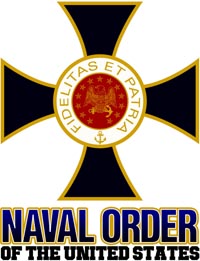News & Tall Tales. 1800s.

Immigrants 1883
August 18, 1883, American Settler
IMMIGRATION AND ITS EFFECTS
The following table shows the distribution of the immigration movement among all the principal nationalities in the last two years.
The truth is, the addition of almost 600,000 to our population in this way in a single year is a wonderful increase. It was scarcely to be expected that the exceptional totals of 1881 and 1882 would be maintained.
They were the outgrowth of the marvellous prosperity that we enjoyed from the date of the resumption of specie payments up to the time of our crop disaster in1881. The poor harvests during those years in Europe also contributed to swell the movement. With the failure of our crops, however, and the other adverse circumstances that followed such as the check to railroad expansion and the consequent diminution in the consumption of many of our manufactured articles the United States presented a less inviting option for immigrants intending to better their condition, and many no doubt were deterred who otherwise would have come.
(Note: The following numbers are difficult to read in the newspaper; figures may be off somewhat, but this will give an overview of immigration during the 1882-1883.)
Countries from which Immigrants arrived |
||
|---|---|---|
Name |
1883 |
1882 |
| England and Wales | 79,852 |
83,697 |
| Ireland | 63,720 |
76,252 |
| Scotland | 19,612 |
18,763 |
| Austria | 10,517 |
20,089 |
| Germany | 191,648 |
249,169 |
| Italy | 31,715 |
33.066 |
| Norway | 21,849 |
28,466 |
| Sweden | 84,596 |
64,276 |
| Dominion of Canada | 64,971 |
93,029 |
| All Other Countries | 78,849 |
104,623 |
| Total | 593,327 |
770,422 |
Immigration at the Golden Gate: Passenger Ships, Exclusion, and Angel Island
Robert Eric Barde
Perhaps 200,000 immigrants passed through the Angel Island Immigration Station during its lifetime, a tiny number compared to the 17 million who entered through New York's Ellis Island.
Nonetheless, Angel Island's place in the consciousness of Americans on the West Coast is large and out of proportion to the numerical record. Angel Island's Immigration Station was not, as some have called it, the Ellis Island of the West, built to facilitate the processing and entry of those welcomed as new Americans. Its role was less benign: to facilitate the exclusion of Asians, starting with the Chinese, then Japanese, Koreans, Indians, and all other Asians.
The Children of Chinatown: Growing Up Chinese American in San Francisco, 1850-1920
Wendy Rouse Jorae
Family Skeletons: Exploring the Lives of our Disreputable Ancestors.
Simon Fowler, Ruth Paley
Most families have a skeleton. You may have already discovered yours via the grapevine or your own research. Or you may simply be intrigued by the dark side of our past. This popular history explores the behaviour of our disreputable ancestors from the unfortunate to the criminal, and introduces a host of colourful characters including 17th century witches, 18th century 'mollies' and Victorian baby farmers. Thematically arranged by skeleton, the text also describes how society punished and provided for its 'offenders' - as well as the changing attitudes that could ultimately bring acceptance.
Italy on the Pacific: San Francisco's Italian Americans (Italian and Italian American Studies)
Palgrave Hardcover)
Sebastian Fichera
San Francisco’s Italian immigrant experience is shown to be the polar opposite of Chicago’s. San Francisco’s Italian immigrants are shown as reintegrating into the host society fairly smoothly, whereas the Chicago group’s assimilation process broke down in dramatic ways.

(Themes in World History)
Patrick Manning
Drawing on examples from a wide range of geographical regions and thematic areas, noted world historian Patrick Manning guides the reader through trade patterns, including the early Silk Road and maritime trade, effect of migration on empire and industry, earliest human migrations, major language groups, various leading theories around migration.
Russian San Francisco (Images of America) (Images of America)
Lydia B. Zaverukha, Nina Bogdan, Foreward by Ludmila Ershova, PhD.
Even before San Francisco was founded as a city, Russian visitors, explorers, and scientists sailed to the area and made contact with both the indigenous people and representatives of the Spanish government. Although the Russian commercial colony of Fort Ross closed in 1842, the Russian presence in San Francisco continued and the community expanded to include churches, societies, businesses, and newspapers. Some came seeking opportunity, while others were fleeing religious or political persecution.

The Naval Order of the United States has a history dating from 1890. Membership includes a wide range of individuals, many with highly distinguished career paths.
The San Francisco Commandery meets the first Monday of each month at the San Francisco Italian Athletic Club in San Francisco, California and holds two formal dinners each year.



 Copyright ~ 1998-2018.
Copyright ~ 1998-2018. 